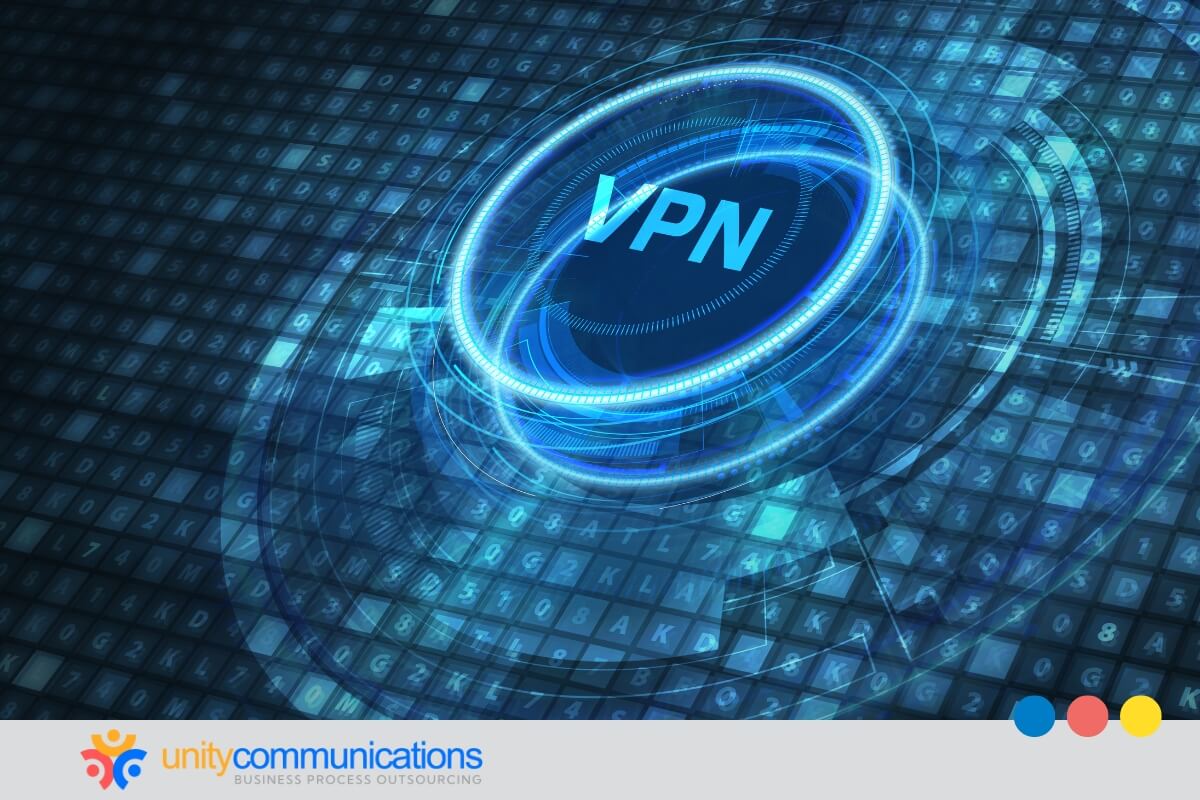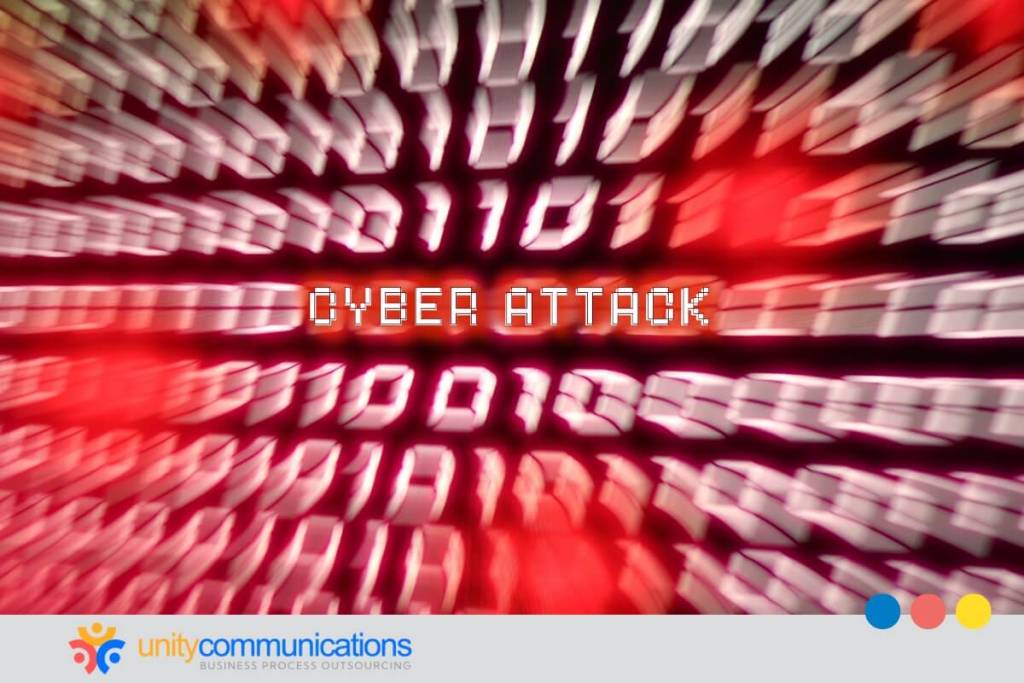Table of Contents
Remote work outsourcing—an essential component of modern business process outsourcing (BPO)—helps companies cut costs, improve efficiency, and access global talent. However, outsourcing critical functions to third-party teams introduces significant security risks.
Cyber threats, data breaches, and compliance challenges pose serious concerns, especially in operations handling sensitive information across multiple locations. Without strong security protocols, companies may face financial losses, reputational damage, and regulatory penalties.
In this article, we will explore the top remote work outsourcing security risks and the proactive strategies you can use to prevent them. Continue reading to learn actionable insights for a successful BPO initiative!
Common remote work outsourcing security risks

What is BPO, and how does it pose security threats? BPO is the practice of delegating non-core business functions to external firms. It typically involves remote operations, with external teams leveraging online platforms to process confidential business information.
The nature of remote work outsourcing makes it a prime target for cybercrime, and threats only grow as businesses continue to rely on third-party vendors. Without proper safeguards, sensitive data can be exposed, and operations can become compromised, leading to financial and reputational damage.
Understanding these risks is essential for your company to protect its outsourcing operations and maintain compliance. Here are the most common security threats in remote outsourcing:
- Phishing attacks. Fraudulent emails or messages trick remote workers into revealing sensitive login credentials or financial data.
- Data breaches. Unauthorized access to confidential business or customer data due to poor system defenses.
- Weak authentication. Simple or reused passwords make it easier for attackers to infiltrate your systems.
- Malware and ransomware. Malicious programs that infect systems and can lock, steal, or corrupt vital business information.
- Unsecured networks. Remote employees using public Wi-Fi increase security risks.
- Third-party vulnerabilities. Security weaknesses in outsourcing vendors can expose company data.
Risks of data breaches and information leaks
Data breaches in the third quarter of 2024 exposed approximately 422.61 million records worldwide. Such incidents highlight the growing risks associated with data security, particularly in remote work outsourcing.
Data breaches and information leaks in outsourcing operations can result in severe financial and reputational damage. Thus, businesses must proactively protect sensitive data and ensure outsourcing vendors follow strict security protocols.
Implementing best practices allows your organization to reduce the risk of cyber threats and maintain compliance with data protection regulations. Here are strategies to avoid such remote work outsourcing security risks:
- Implement strong access controls. Restrict data access to only authorized personnel.
- Use end-to-end encryption. Protect data during transmission and storage.
- Conduct regular security audits. Identify and address vulnerabilities in remote work systems.
- Train remote employees on cybersecurity. Educate staff on recognizing phishing attempts and security best practices.
- Ensure vendor compliance. Work only with outsourcing partners who meet industry security standards.
- Use multifactor authentication (MFA). Add an extra layer of protection for remote access.
Challenges with access control and identity management
Access control and identity management are critical in remote work outsourcing, as businesses must ensure that only authorized individuals can access sensitive systems and data. Weak authentication methods, poor password management, and a lack of oversight can lead to unauthorized access and security breaches.
Thus, you must implement robust security measures and enforce strict identity verification processes to mitigate these risks. You can start with these:
- Enforce MFA. Require multiple verification steps to enhance security.
- Implement role-based access control (RBAC). Grant employees access only to the data and tools necessary for their jobs.
- Use single sign-on (SSO) solutions. Simplify secure access management across multiple systems.
- Regularly update and review access permissions. Remove or modify credentials for former employees and inactive accounts.
- Monitor and log access activities. Track user activity to detect unauthorized or suspicious behavior.
- Adopt zero-trust security principles. Continuous verification is required instead of assuming trust based on location or device.
The impact of weak endpoint security on BPO teams
Weak endpoint security in BPO teams poses a significant risk, as remote workers use various devices to access company systems. Unsecured endpoints, such as personal laptops or mobile devices, can become entry points for malware, ransomware, and unauthorized access.
Strengthening endpoint security is essential to protect sensitive business data and maintain a secure remote work environment. Here are ways to achieve this:
- Require company-approved devices. Ensure remote workers use secure, managed devices for work tasks.
- Implement endpoint detection and response (EDR). Use advanced security tools to monitor and respond to threats in real time.
- Enforce regular software updates and patching. Keep all devices updated to prevent exploitation of known vulnerabilities.
- Use virtual private networks (VPNs). Secure remote connections with encrypted access.
- Enable device encryption. Protect stored data in case of device theft or loss.
- Apply strict Bring Your Own Device (BYOD) policies. Set clear security requirements for employees using personal devices.
Secure communication and data-sharing best practices

Secure communication and data-sharing practices protect sensitive business information from cybercriminals. Without proper security measures, data transmitted between you and your outsourcing partner can be intercepted, leading to potential breaches.
Implementing best practices ensures confidentiality, integrity, and compliance in remote work environments. The following are applicable best practices:
- Use end-to-end encrypted communication tools. Protect messages and files from unauthorized access.
- Implement secure file-sharing platforms. Utilize cloud services with strong encryption and access controls.
- Enforce strict access permissions. Limit file access to only those who need it.
- Regularly update and monitor communication tools. Patch vulnerabilities and track unusual activity.
- Train employees on secure data handling. Educate staff on recognizing phishing attempts and safe sharing practices.
- Use VPNs for remote access. Encrypt connections to prevent data interception.
Compliance and regulatory risks in outsourced remote work
In 2023, the U.S. Department of Health and Human Services (HHS) Office for Civil Rights (OCR) reported 725 data breaches that exposed or improperly disclosed over 133 million records. Many cases are believed to have resulted from businesses failing to comply with data protection laws and industry regulations.
Such violations can lead to legal penalties, reputational damage, and financial losses. By proactively addressing security risks in remote work outsourcing, your organization can prevent costly violations and maintain trust with clients and stakeholders.
Here are key compliance measures to implement:
- Partner with compliant vendors. Ensure outsourcing partners comply with the General Data Privacy Regulation (GDPR), the Health Insurance Portability and Accountability Act of 1996 (HIPAA), the Payment Card Industry Data Security Standard (PCI-DSS), or other relevant regulations.
- Establish clear data protection agreements. Define security responsibilities in contracts with third-party providers.
- Conduct regular compliance audits. Assess outsourcing vendors to ensure they adhere to legal and security standards and can manage regulatory risks associated with remote work.
- Implement strict access controls. Restrict sensitive data access to authorized personnel only.
- Maintain proper documentation and reporting. Keep detailed records of data handling and security protocols.
- Train employees on regulatory requirements. Educate both in-house and BPO teams on compliance best practices.
Vetting and selecting secure outsourcing providers
Choosing the right outsourcing provider is crucial for maintaining security and protecting sensitive business data. A poorly vetted provider can introduce cybersecurity risks, compliance issues, and operational inefficiencies. You must carefully evaluate potential partners to ensure they follow strict security protocols and meet industry standards.
Here are strategies to find the right outsourcing partner:
- Assess security policies and certifications. Ensure the provider complies with industry standards such as ISO 27001, SOC 2, or GDPR.
- Review past performance and reputation. Check client reviews, case studies, and security track records.
- Conduct thorough risk assessments. Identify potential vulnerabilities before signing contracts.
- Require strong data protection measures. Verify encryption, access controls, and incident response plans.
- Evaluate compliance with legal regulations. Ensure adherence to regional and industry-specific laws.
- Request transparency in security practices. Demand clear policies on how data is handled and protected.
Cybersecurity training for remote and outsourcing management
Sixty-eight percent of breaches stemmed from human error or social engineering attacks, highlighting the need for strong cybersecurity training. This is especially crucial for remote employees to prevent security breaches and data leaks.
Without proper education, workers may fall victim to cyberattacks, weak password practices, or other vulnerabilities. Regular training ensures that in-house and BPO teams understand security protocols and follow best practices.
You must implement these strategies:
- Provide regular security awareness sessions. Keep employees informed on evolving threats and safe practices.
- Simulate phishing and social engineering attacks. Test employees’ ability to recognize and avoid scams.
- Teach secure password management. Encourage the use of password managers and MFA.
- Train employees on data handling and privacy policies. Ensure compliance with security regulations.
- Offer role-specific security training. Tailor sessions for IT staff, customer support, and other departments.
- Require training for new hires and outsourcing vendors. Ensure all team members follow security best practices from day one.
Steps to develop a comprehensive remote work security policy

Kaspersky found that remote non-IT professionals pose cybersecurity risks, with human errors causing 38% of breaches. Key issues include malware downloads (28%), weak passwords (25%), unsecured website visits (24%), and unauthorized data sharing (24%).
To mitigate these risks, a comprehensive remote work security policy is essential for protecting company data and ensuring safe operations in outsourced environments. Without clear guidelines, remote workers and outsourcing providers may unintentionally expose sensitive information to cyber threats.
Here are the steps for developing a structured security policy that maintains control over data access, complies with regulations, and manages risks effectively:
- Assess security risks and vulnerabilities. Identify potential threats specific to remote work and outsourcing.
- Define access control measures. Establish role-based permissions and MFA.
- Outline data protection requirements. Specify encryption, secure file sharing, and data handling procedures.
- Implement device security standards. Require updates, antivirus protection, and endpoint security tools.
- Set clear guidelines for secure communication. Mandate the use of encrypted messaging and VPNs.
- Develop an incident response plan. Prepare steps for handling security breaches and data leaks.
- Regularly review and update policies. Adapt to emerging threats and technological changes.
The bottom line
Common remote work outsourcing security risks include data breaches, weak access controls, and insufficient endpoint protection. Without proper safeguards, businesses risk exposing sensitive information to cyber threats, compliance violations, and disrupting operations.
Robust security policies, employee training, and vendor vetting can help mitigate these risks. Collaborating with a reliable BPO firm can ensure secure remote outsourcing operations and protect your business from cyber threats. Let’s connect!




